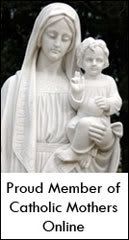In case you've never seen a meteor shower, tomorrow night is a good chance to view the Geminids. I was more faithful to do this with Meggar and Dorito, but need determination to provide my twins with this middle-of-the-night tradition. Or I need to go to bed earlier (which is impossible with late-night hockey practices). I think the namesake of this meteor shower should prove an added motivator!
from SPACE.com Skywatching
The Geminids get their name from the constellation of Gemini, the Twins, where the display of so-called "shooting stars" appears to originate from the night sky. During the overnight hours of Dec. 13 and Dec. 14, the shower will peak for north America. The Geminid meteors are—for those willing to brave the chill of a December night—a fine winter shower, and usually the most satisfying of all the annual showers. They can even surpass the famous Perseid meteors of August at their peak. Studies of past displays show that this shower has a reputation for being rich in slow, bright, graceful meteors and fireballs as well as faint meteors, with relatively fewer objects of medium brightness. Many appear yellowish in hue. Some even seem to form jagged or divided paths. The Geminids usually perform splendidly every year, although the moon is going to pose a bit of a problem this time. In fact, the moon will reach first quarter phase on Dec. 13, the same night as the Geminid peak. That means that many of the fainter Geminid streaks will likely be washed out by the bright moonlight. But unlike the Leonids, where the moon was brightly illuminating the sky most of the night, in the case of the Geminids the moon will be setting around 12:30 a.m. (your local time) early on Tuesday, Dec. 14. That means that the sky will be dark and moonless for the balance of the night, making for perfect viewing conditions for the shower.
Subscribe to:
Post Comments (Atom)



No comments:
Post a Comment